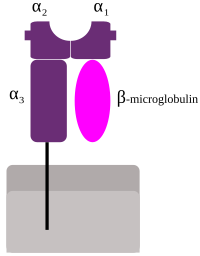
Gene mutation analysis using next‐generation sequencing and its clinical significance in patients with myeloid neoplasm: A multi‐center study from China
Sign Up to like & getrecommendations! Published in 2023 at "Cancer Medicine"
DOI: 10.1002/cam4.5690
Abstract: Myeloid neoplasms (MN) tend to relapse and deteriorate. Exploring the genomic mutation landscape of MN using next‐generation sequencing (NGS) is a great measure to clarify the mechanism of oncogenesis and progression of MN. read more here.
Keywords: gene mutation; next generation; using next; generation sequencing ... See more keywords

Sequential evaluation of MUC promoter methylation using next‐generation sequencing‐based custom‐made panels in liquid‐based cytology specimens of pancreatic cancer
Sign Up to like & getrecommendations! Published in 2022 at "Diagnostic Cytopathology"
DOI: 10.1002/dc.25022
Abstract: As liquid‐based cytology (LBC) specimens preserve high‐quality DNA, clinical sequencing of LBC specimens using next‐generation sequencing (NGS) is becoming a common strategy. This study aimed to evaluate the feasibility of NGS‐based custom‐made panels for evaluating… read more here.
Keywords: liquid based; using next; based cytology; next generation ... See more keywords

Molecular characterization of gastric-type endocervical adenocarcinoma using next-generation sequencing
Sign Up to like & getrecommendations! Published in 2019 at "Modern Pathology"
DOI: 10.1038/s41379-019-0305-x
Abstract: Gastric-type endocervical adenocarcinoma is an uncommon aggressive type of endocervical adenocarcinoma that is not associated with human papillomavirus (HPV). At present, this tumor is classified under the spectrum of mucinous carcinoma of the uterine cervix.… read more here.
Keywords: endocervical adenocarcinoma; type endocervical; adenocarcinoma; gastric type ... See more keywords

Using next‐generation sequencing for characterising HLA‐DRB1 and DQB1 loci in a cohort of Colombian women
Sign Up to like & getrecommendations! Published in 2019 at "HLA"
DOI: 10.1111/tan.13672
Abstract: The Colombian population is characterised by a high genetic diversity, secondary to the ethnic mixture arising from colonisation. Unfortunately, few reports are available regarding HLA‐DRB1 and DQB1 diversity in Colombia to date. HLA‐DRB1 and DQB1… read more here.
Keywords: drb1 dqb1; hla drb1; dqb1; population ... See more keywords

Identification of the novel HLA-C*04:440 allele using next-generation sequencing.
Sign Up to like & getrecommendations! Published in 2022 at "HLA"
DOI: 10.1111/tan.14589
Abstract: The HLA-C*04:440 allele differs from HLA-C*04:82:01 by a single non-synonymous change, c.14C > A. This article is protected by copyright. All rights reserved. read more here.
Keywords: allele using; novel hla; identification novel; using next ... See more keywords

Identification of the novel HLA‐B*56:01:18 allele using next‐generation sequencing
Sign Up to like & getrecommendations! Published in 2022 at "HLA"
DOI: 10.1111/tan.14668
Abstract: The HLA‐B*56:01:18 allele differs from HLA‐B*56:01:01:01 allele by a single nucleotide in codon 326.3. read more here.
Keywords: hla; using next; novel hla; allele using ... See more keywords

Identification of the novel HLA-C*01:242 allele using next-generation sequencing.
Sign Up to like & getrecommendations! Published in 2023 at "HLA"
DOI: 10.1111/tan.15050
Abstract: The HLA-C*01:242 allele differs from HLA-C*01:02:01:01 allele by a single nucleotide in codon 281. read more here.
Keywords: hla 242; using next; 242 allele; novel hla ... See more keywords

Characterization of the seminal bacterial microbiome of healthy, fertile stallions using next-generation sequencing
Sign Up to like & getrecommendations! Published in 2021 at "Animal Reproduction"
DOI: 10.1590/1984-3143-ar2020-0052
Abstract: Abstract High-throughput sequencing studies have shown the important role microbial communities play in the male reproductive tract, indicating differences in the semen microbial composition between fertile and infertile males. Most of these studies were made… read more here.
Keywords: healthy fertile; microbiome healthy; generation sequencing; next generation ... See more keywords

Detection of nasopharyngeal carcinoma susceptibility with single nucleotide polymorphism analysis using next-generation sequencing technology
Sign Up to like & getrecommendations! Published in 2017 at "Oncotarget"
DOI: 10.18632/oncotarget.17085
Abstract: Nasopharyngeal carcinoma (NPC) is a head and neck cancer with high incidence in South China and East Asia. To provide a theoretical basis for NPC risk screening and early prevention, we conducted a meta-analysis of… read more here.
Keywords: susceptibility; analysis; single nucleotide; nasopharyngeal carcinoma ... See more keywords

Using Next-Generation Sequencing to Detect Differential Expression Genes in Bradysia odoriphaga after Exposure to Insecticides
Sign Up to like & getrecommendations! Published in 2017 at "International Journal of Molecular Sciences"
DOI: 10.3390/ijms18112445
Abstract: Bradysia odoriphaga (Diptera: Sciaridae) is the most important pest of Chinese chive. Insecticides are used widely and frequently to control B. odoriphaga in China. However, the performance of the insecticides chlorpyrifos and clothianidin in controlling… read more here.
Keywords: bradysia odoriphaga; expression; next generation; generation sequencing ... See more keywords

Revisiting AGAMOUS-LIKE15, a Key Somatic Embryogenesis Regulator, Using Next Generation Sequencing Analysis in Arabidopsis
Sign Up to like & getrecommendations! Published in 2022 at "International Journal of Molecular Sciences"
DOI: 10.3390/ijms232315082
Abstract: AGAMOUS-like 15 (AGL15) is a member of the MADS-domain transcription factor (TF) family. MADS proteins are named for a conserved domain that was originally from an acronym derived from genes expressed in a variety of… read more here.
Keywords: generation sequencing; next generation; somatic embryogenesis; using next ... See more keywords